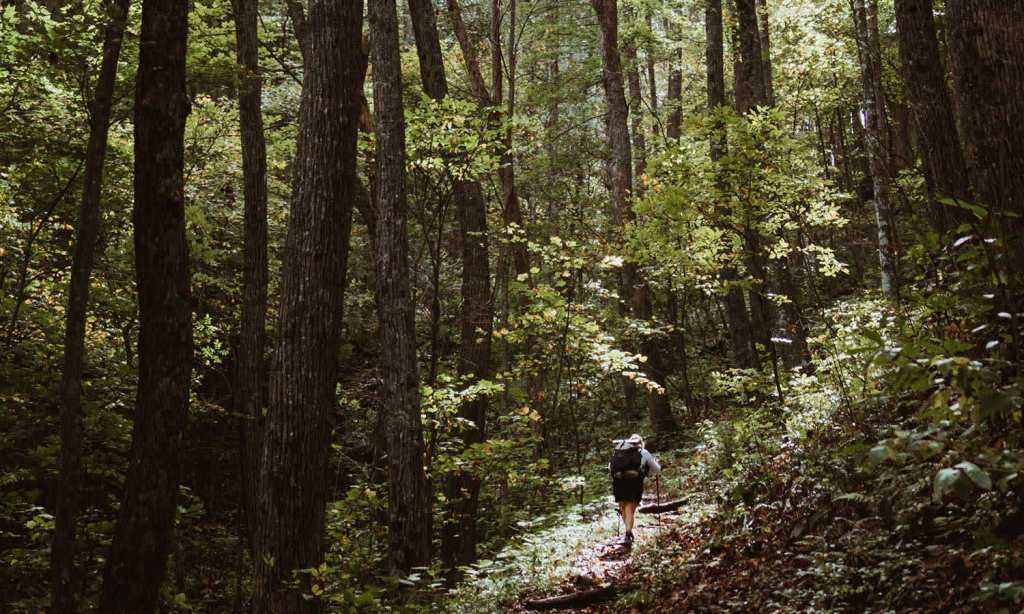In 2021, we’re taking the slow approach to travel. While yes, we have a lot of making up to do in order to satisfy our wanderlust following a year spend more or less in our lounge rooms, we’ve used the time to learn about the importance of sustainable travel experiences in nature.
Tiny homes, regional road trips, camping in the national park; these each allow us to connect with nature and enjoy a holiday at the same time. But we have a new favourite way to unwind and soak in the surroundings: forest bathing.
“Forest bathing originated in Japan. Known as shinrin-yoku, with shinrin meaning ‘forest’ and yoku meaning ‘bath’, the practice gained popularity in the 1980s as work-related stress began to grow,” Forest bathing expert, Gabrielle Young, director of Terra and Tide, tells The Latch.
“It has since spread across the globe as a way to destress by reconnecting with nature. Forest bathing allows you to take time out from your busy life to experience healing in the natural surroundings.”
Despite the name, forest bathing does not call for a bathtub or natural pool. It’s actually about bathing in a more metaphorical sense.
“Surprisingly, forest bathing doesn’t require water at all. All you need is a natural space to connect with. For mindfulness and a truly unique experience, you can explore New Zealand’s beautiful Waiheke Island with Terra and Tide by going on a guided forest therapy walk.”
Young believes the stunning, picturesque landscapes of New Zealand to be some of the most beautiful for forest bathing. While of course, the practice needs only a quiet spot in lush greenery to be effective, it’s hard to go past NZ’s dense forests, with natural freshwater streams, lakes, and rolling snow-capped mountains.
She tells us: “Forest bathing can be as simple as finding a quiet spot in these natural environments and focusing on the sounds and scents, allowing your senses to help connect you deeply to nature.”
In a way, it’s sounds as if you may have done forest bathing before, without knowing. Anyone who’s ever gone for a nature hike and stopped for a moment to absorb the surroundings may have felt the unique physiological benefits of forest bathing, which according to Young, include the following:
The lowering of cortisol levels, which is the primary stress hormone; activation of the parasympathetic nervous system, otherwise known as our rest and repair mode; and an increase in serotonin, which is the key hormone for happiness and for improving mood stability.
Regarding the mind, forest bathing is said to help restore attention and focus, improve problem-solving ability, spark creativity, encourage mindfulness, and engender a sense of fascination and wonder.
“Since our bodies and minds are interconnected, the physical benefits that our bodies experience create benefits for the mind as well,” Young said.
With the borders now open between Australia and New Zealand, forest bathing is an activity to keep in mind as you craft your first post-iso itinerary. Thankfully, there’s no shortage of forests to explore and if you need a helping hand to find them, you can find a number of accredited nature and forest therapy guides.
Terra and Tide, a sustainable tourism business, runs guided forest therapy walks on Waiheke Island and in the Hauraki Gulf in New Zealand. Whirinaki Forest Footsteps is another forest bathing experience located in one of the world’s last prehistoric rainforests, Whirinaki. And WaiOra Wellbeing runs an experience on Aotea Great Barrier Island.
Read more stories from The Latch and subscribe to our email newsletter.







